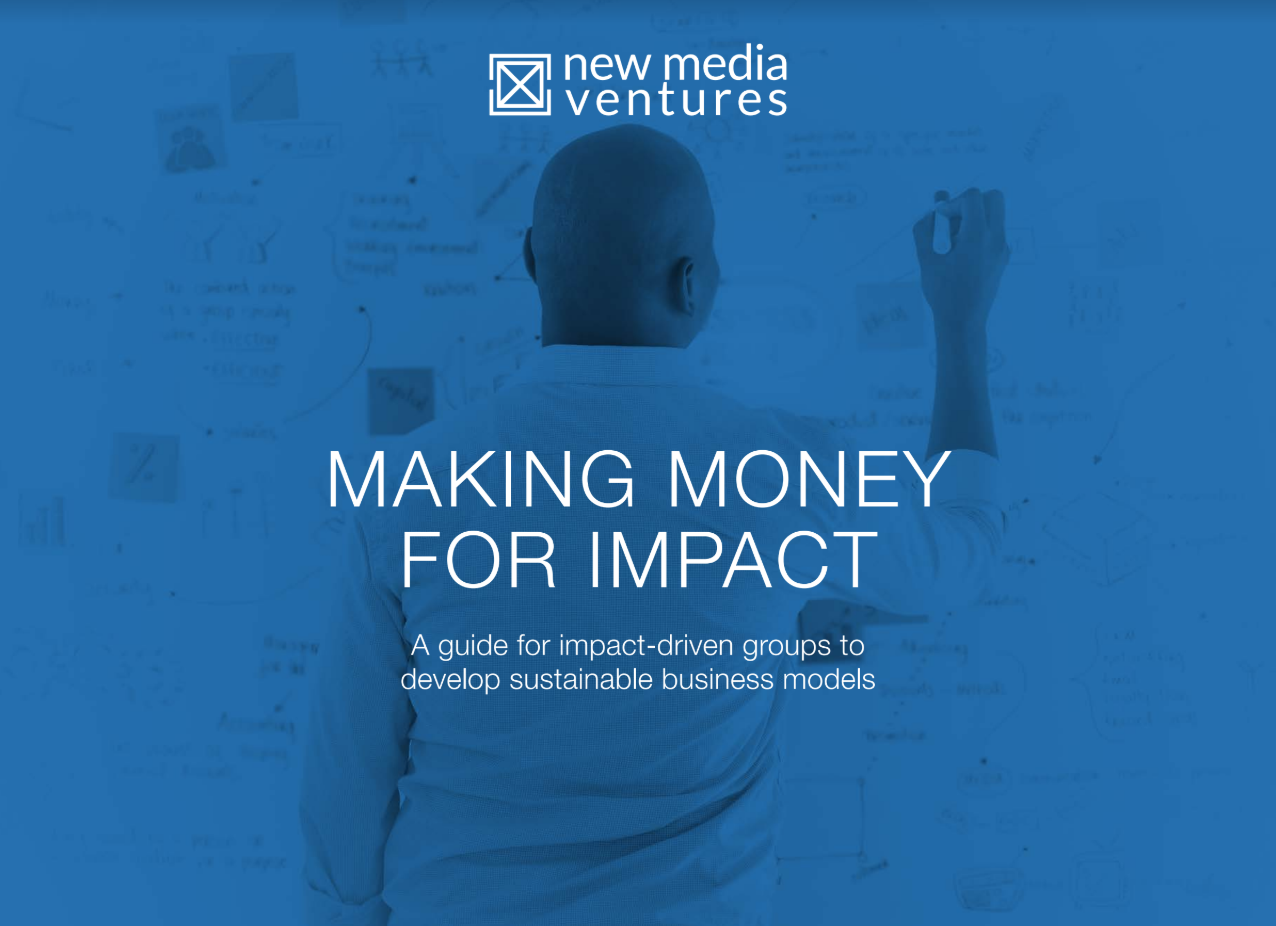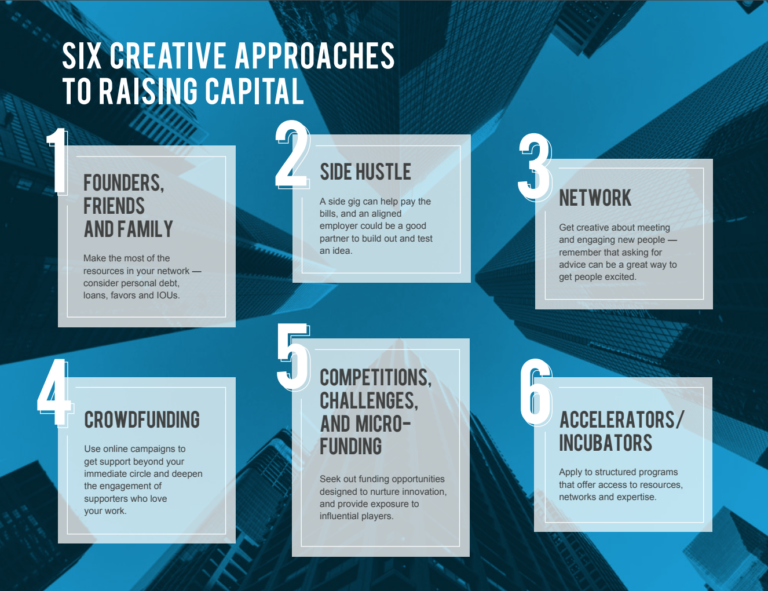Making Money for Impact: 10 Approaches to Revenue for Social Change
Published
In the categories:
- Whitepaper

Develop more robust business models for sustaining your impact.
For impact-driven organizations, making money isn’t just about hitting the bottom line. It’s about resilience. Revenue is the means by which we make — and continue to grow — our impact. In the context of last week’s election results, the financial sustainability of impact-driven organizations is more critical than ever to ensure that the progress we’ve made on social, racial and environmental justice continues forward.
Mission-driven groups have historically experienced a tension between revenue and impact. This raises an important question: how might you grow your revenue and impact in tandem? The earlier you tackle that question, the more resilient your organization or business will be.
At New Media Ventures, we invest in startups that build movements, create new narratives and drive civic engagement. We’ve reviewed hundreds of companies and organizations for investment and have proudly financed more than 40 impact startups. We invest in companies like Upworthy, which disseminates essential counter-narratives to hate and bigotry, and in organizations like SumOfUs, a global movement of 10 million members advocating for corporate accountability. Based on our expertise at the intersection of technology, media and social change, we’ve identified 10 promising revenue models at work in the impact space.
The examples in this white paper focus primarily on technology-enabled organizations, both for- and non-profit, but they apply across sectors and focus areas. This guide can also help funders — both donors and investors — learn how they can better support impact groups.
While these models may be familiar in a commercial context, we have found that social enterprises can deploy them in unique ways. In fact, impact groups may be able to uniquely leverage their social missions toward financial sustainability. For example, many impact groups have been able to generate small donor revenue effectively precisely because of their social missions. From the innovative to the familiar, you can learn about all of these models, including their strengths and limitations, by downloading the white paper.
You Have a Business Model. Now What?
Of course, a model is simply a model; ultimately, the specifics of execution are what determine success. And choosing the business model that works best for you is just the beginning. There are a number of important questions you should also be prepared to answer.
1. What are your costs?
Cost and revenue are two sides of the same coin. Impact-driven groups need revenue to sustain the ongoing costs incurred from maintaining technologies, sustaining their teams and advocating their missions. To be a sustainable organization, it’s just as important to understand how you spend money as it is to understand how you make it.
2. How will you develop the necessary skills?
There is a specific, learned skill set necessary to generate revenue: validating customer demand and determining pricing, packaging the proof-of-concept in sellable form and projecting potential income from the product. Impact groups need to build the internal business skill sets necessary to put into practice their earned revenue plans.
3. How much scale?
Scale means the ability to grow faster than your costs increase. Economies of scale and the scalability of products or services can help decrease cost and increase revenue. Yet, scale can also result in compromises to your mission by engaging a less-aligned audience or bringing in non-aligned customers.
4. Where will the capital come from?
It’s important to distinguish between capital raised and a genuine revenue model. In some cases, investors are willing to invest capital for the possibility of large returns or impact. In other cases, successful fundraising may offer little evidence of recurring earnings. Even for startups that raise millions in funding, investment doesn’t mean there is a robust revenue model at work.
While it’s critical for organizations to become more financially self-sufficient, remember that for non-profits in particular, not every organization has an earned revenue model. We’ve seen countless organizations experience mission creep and dilute their impact in their efforts to find a sustainable business model. As Founder of My Society Tom Steinberg notes, “It’s important to be able to talk honestly about not achieving self-funding,…It will stop impactful-but-not-profitable ideas being distorted into impactless-but-possibly-profitable ideas.”
While there are no easy answers, the best business model is one that brings reliable and recurring revenue that is aligned with your mission. As Change.org CEO Ben Rattray observed about his company’s recent pivot, “The best business model for any mission-driven company is one in which greater social impact is intimately tied with greater revenue generation, so that increased impact automatically generates more revenue that can then power more impact, in a virtuous cycle.”
These are no ordinary times; and we need to be bold about how we resource our most important institutions and emerging movements.
We’ve been inspired by how entrepreneurs in our portfolio and beyond have creatively combined impact and revenue. We’re curious to hear what revenue models you are using. What have you tried that failed? What worked out against all odds?
How You Can Help: Spread the Word
Our goal is to catalyze a conversation that typically happens behind closed doors. Many of us who care about social change are wrestling with the same questions. Let’s bring these conversations into the open and wrestle honestly with some of the contradictions of growth and sustainability.
Like & share this post on Medium.
Share your experiences or join the conversation on Twitter with the hashtag #moneyforimpact.
Are you sustainable? We’ve identified 10 revenue models for social change in our new white paper: http://bit.ly/MoneyForImpact #moneyforimpact
